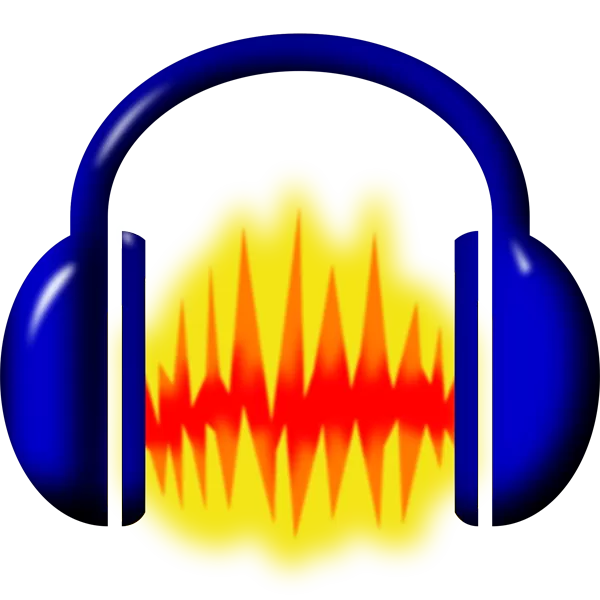Audacity is a free, open source, cross-platform and easy-to-use audio software for multi-track recording and editing. It can record live audio through a microphone, mixer, or digitize recordings from other media. With some sound cards, and on any recent version of Windows, Audacity can also capture streaming audio.
Import sound files, edit them, and combine them with other files or new recordings. Export your recordings in several common file formats.
Is Audacity suitable for recording a podcast?
Yes, Audacity features a large number of effects and preset EQ curves with real time preview. It also lets you import and export WAV, AIFF, AU, FLAC, and MP3 natively. In addition, an auto-duck feature lets you mix different audio tracks or voiceovers for recording a proper podcast.
Is Audacity safe to use?
Audacity is free and open-source software that's been around for many years, so yes, it's safe to use. There was some controversy in 2021 after the company was acquired by Muse Group and changes were made to the program's privacy policy, but thankfully the community's protests got Audacity back on track.
Does Audacity work on Android or iOS?
No, Audacity is not available for Android or iOS, but WavePad offers similar functionality and is available on mobile for free.
What are the best Audacity features?
Audacity packs several features for recording and editing different type of audio files such as:
- 100+ sound effects.
- Support for 16-bit, 24-bit and 32-bit audio files
- Simple audio compressor
- A built-in mixer
- Plot Spectrum window for detailed frequency analysis
- Batch processes for tuning up several audio files at once
What are the best Audacity alternatives?
WavePad and ocenaudio are well known alternatives for recording and editing audio files.
Is Audacity free?
Yes, Audacity is free and open-source. You can use this software for any personal or commercial purpose.
Features
Recording
- Audacity can record live audio through a microphone or mixer, or digitize recordings from other media.
Export / Import
- Import, edit, and combine sound files. Export your recordings in many different file formats, including multiple files at once.
Sound Quality
- Supports 16-bit, 24-bit and 32-bit. Sample rates and formats are converted using high-quality resampling and dithering.
Plug-ins
- Support for LADSPA, LV2, Nyquist, VST and Audio Unit effect plug-ins. Effects can be easily modified in a text editor - or you can even write your own plug-in.
Editing
- Easy editing with Cut, Copy, Paste and Delete. Also unlimited sequential Undo (and Redo) in the session to go back any number of steps.
Effects
- Real-time preview of LADSPA, LV2, VST and Audio Unit (macOS) effects. Plug-in Manager handles plug-in installation and addition/removal of effects and generators from the menus.
Accessibility
- Tracks and selections can be fully manipulated using the keyboard. Large range of keyboard shortcuts.
Analysis
- Spectrogram view mode for visualizing and selecting frequencies. Plot Spectrum window for detailed frequency analysis. Support for Vamp analysis plug-ins.
What's New
- #5467 Fix 24-bit recording.
- #5488 Fix a crash with .aup importing.
- #5471 #5483 Fix crossfading of clips and tracks.
- #5473 Exporting multiple files honors sample rate settings again.
- #5480 #5417 Fix crashes related to external program exports.
- #5479 #5476 Fix BSD and ARM builds.
- #5498 Ctrl+J is now a standard shortcut for joining clips.
- #5389 Stereo tracks no longer randomly split into mono.
- #5007 When exporting a file, the file extension is now always added (except for custom FFmpeg and external program exports).
- #5516 Fix a crash when exporting Opus with older CPUs that don't support AVX.
Changes
- Some of the built-in effects are now realtime capable (Bass & Treble, Distortion, Phaser, Reverb and Wahwah).
- #4352 Added a new effect: Shelf Filter.
- Added an initial (beta) version of Beats and Bars.
- #4414 Reworked the bottom toolbar dock:
- Project Sample Rate is now found in Audio Setup -> Audio Settings (formerly known as Project Rate).
- The Snapping Toolbar (formerly known as Snap-To) is now independent of the Selection Toolbar.
- Added a new Time Signature Toolbar (beta). It is hidden by default.
- #4212 Improved Zooming behavior slightly (more to come in the future).
- #4393 Added a new ruler, Linear (dB). This ruler goes from 0 dBFS to -∞ dBFS and better reflects the volume as shown in the recording/playback meters.
- #3820 When copying clips between projects, you now can choose between whether to copy smart clips or just the visible portion.
- #4133 Added a delete button to the Cut/Copy/Paste toolbar.
Bugfixes
- #1584 Audacity no longer dithers tracks unnecessarily.
- #2427 Linux playback now handles output latency better (less stutters).
- #3796 The EQ effect no longer resets clip names.
- #3801 Audacity no longer crashes when trying to load projects with plugins that since have been deleted.
- #4417 Resampling a track no longer trims it.
Libraries
- FFmpeg 6 (avformat 60) is now supported.
- Moved from Breakpad to Crashpad.
- Extracted various libraries from within Audacity.



